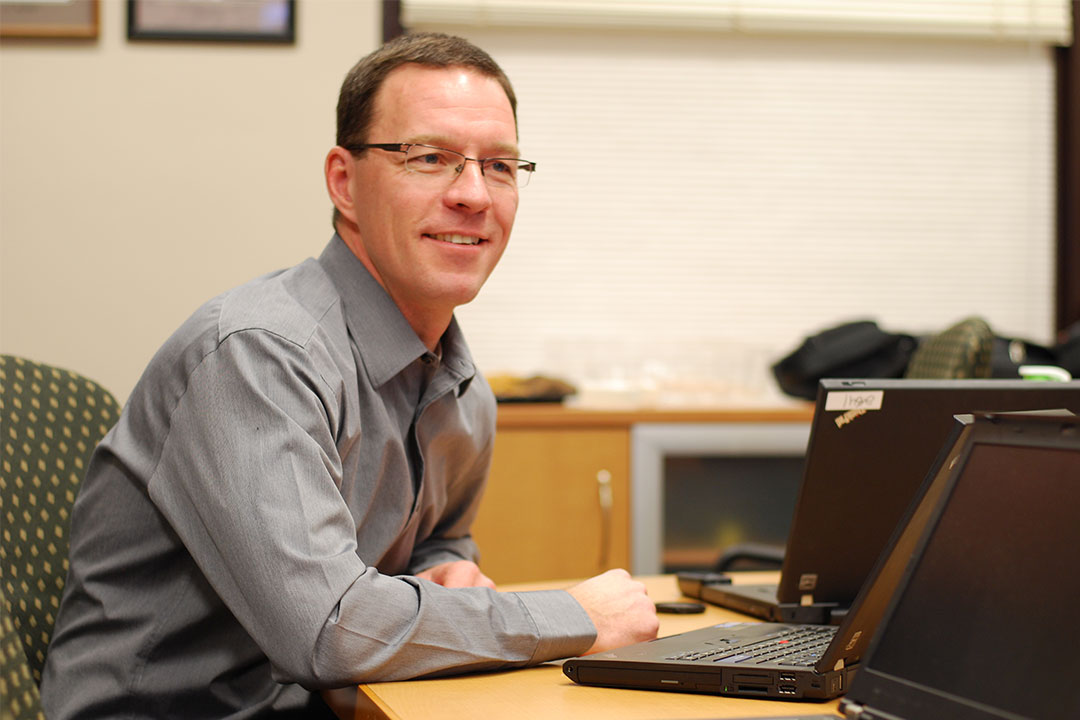
Working to reduce workplace injuries
With fewer instances of workplace injuries, the University of Saskatchewan’s commitment to workplace safety is being realized.
By Zaheed Bardai“We had set a goal of 25 per cent for a reduction in workplace injury incidents and we’re on track to meeting this goal,” said Rob Kliewer, manager of Safety Resources at the U of S.
Maintaining a healthy work and learning environment is a key principle of the university’s values, including occupational health and safety and the reduction of workplace illness and injuries. Kliewer said that workplace injuries are often predict- able, preventable and costly.
“First, there’s a human cost: pain, recovery, added stress on ourselves, our families and colleagues. And second, there’s a financial burden to the university: time away from work, damaged property, and fines and fees.”
In June of this year, the university amassed a $117,000 surcharge from the Worker’s Compensation Board (WCB) for its number of occupational injury claims. By reducing the number of workplace injuries, the university can work to eliminate this surcharge.
“We do not want our people to stop reporting workplace injuries, but we want them have greater awareness for workplace hazards and to be safer when doing their work,” said Kliewer.
The university is full of high-hazard activities in classrooms, labs, offices, workshops and facilities. Fortunately, Kliewer’s plan for establishing a culture of safety and reducing workplace injuries is well underway. Between January and June of 2017, there were 60 reportable WCB incidents, compared to 77 in the same period of 2016. He attributes this to good teamwork and promoting a vision of safer work areas for the university community.
There are 22 local safety committees in colleges and units, reporting to a single Occupational Health Committee (OHC). The OHC co-ordinates local site visits and inspection audits more frequently than in the past, ensuring that facilities are compliant with discipline-specific regulations. Safety Resources also provides more safety training courses for which faculty and staff can register through its website.
A new initiative, the Contractor Safety Program, is for external contractors who do construction work on campus. They are also required to follow the university’s workplace safety protocols.
Kliewer is pleased with the progress the U of S has made in promoting a culture of workplace safety, but recognizes that there is more work to be done.
“There has been renewed enthusiasm for the university’s commitment to Mission: Zero, a partnership between the WCB and the Saskatchewan Ministry of Labour Relations and Workplace Safety,” said Kliewer.
“We are working towards zero injuries, zero fatalities and zero suffering in university work spaces and we’d like to be at a place where faculty, staff and students see themselves as partners in this process.” As a testament to this commitment, some faculty are incorporating safety programming at the start of their lectures, going over fire evacuation routes, lockdown and emergency response plans.
Additionally, Mission: Zero decals are being added to University Services vehicles across campus to promote the university’s principle of a healthy work and learning environment.
For more information about workplace safety in your college or unit, contact Safety Resources at 306-966-4675 or email safetyresources@usask.ca.
Zaheed Bardai is a communications specialist in Human Resources.

